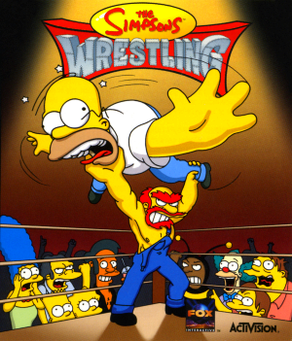Gestures
Certain movements of one's body are, in many cultures, interpreted as a taunt. These can be expressed through the eyes, hands, fingers, head and other areas of the body.
Akanbe
A gesture in Japanese culture, made by pulling a lower eyelid down to expose the red underneath.
Clenched fist
A raised, clenched fist is used as a gesture of defiance by a number of groups. It is usually considered to be hostile, yet without any sexual, scatological, or notionally offensive connotations.
Crotch-grab
The crotch-grab is done almost exclusively by males. It is, as the name suggests, a grabbing (or one-handed cupping and lifting) of the penis and testicles - usually through clothing. In Italy the sign is by no means purely a taunt, being also an apotropaic gesture of considerable antiquity employed, since the days of Ancient Rome, to ward off the evil eye or bad luck and also to attract good luck. It is, in this context, an invocation of the benign powers of fertility embodied in the male genitalia and, as such, lies at the root of the magical intent expressed symbolically in the fascinum and probably also the cornicello. Despite recent rulings by the Italian legal system, the (public) crotch-grab is still used by some Italian men as a means of deflecting the ill-luck threatened by objects or people related to death and burial and (more esoterically) the unlucky number 17 (said to be unlucky because it a) resembles a man hanging from a gibbet and b) because when written XVII in Roman numerals is an anagram of 'vixi' - 'I lived', a verb form considered unlucky because of its frequent occurrence in ancient Roman funerary inscriptions). [4] [5]
Cutthroat
The cutthroat gesture is performed by drawing the hand, or a finger or two, across the throat. It represents slitting the throat with a knife, and means that the gesturer or someone else is metaphorically being killed. It is rarely if ever used literally to refer to death (and when the whole hand is used, it is usually a benign signal to stop or pause something), though it is occasionally used as a theatrical threat ("I'm going to kill you"). The gesture earned a great deal of national notoriety in the NFL during the 1999 season in which several players did the cutthroat gesture.
The finger
The finger gesture is a gesture consisting of a fist with the middle finger extended. It is universally understood as "fuck you" due to its resemblance to the penis.[ citation needed ] It is certainly thousands of years old, being referred to in Ancient Roman literature as the digitus infamis or digitus impudicus. Performing this gesture is also called "flipping the bird" in countries where "the finger" is used. In other regions, "flipping the bird" refers to the raising of the middle and index finger with the back of the hand directed at the recipient. It can also mean "Victor" in some countries, which is not to be mistaken for the "Peace" gesture. The "Peace" gesture is done with the palm facing the recipient of the gesture. In Britain, this is also the case; however, if the palm faces inwards (towards the person doing the "peace" sign), it is an offensive gesture in Britain, though not considered quite as rude as "the finger".[ citation needed ]
Loser
The "loser" gesture used in some countries is performed by raising the index finger and thumb of one's right hand perpendicular to each other and then placing them on one's forehead with index finger pointing upward. So placed, the fingers form the letter "L" from the perspective of a viewer and signify the name-calling insult "loser" directed toward the person being spoken to or spoken about.
Shocker
Done by holding up the hand with the index, middle and pinky finger, implying the act of putting two fingers in a woman's vagina and one in her anus.
Tongue
Often sticking one's tongue out at another is seen as mocking the other. A variation of this is also known as blowing a raspberry. It can also be wagged in a manner suggesting cunnilingus, which is usually seen as highly vulgar.
Turkey face
The turkey face gesture is when you take your hand and put your thumb on your nose, wriggle your head back and forth and do the same thing with the hand. Cocking a snook is an old British taunting gesture in which the thumb of one hand is on the nose and the extended fingers are wiggled.
V sign
The insulting version of the gesture (with the palm inwards) is often compared to the offensive gesture known as "the finger". The "two-fingered salute", as it is also known, is commonly performed by flicking the V upwards from wrist or elbow. The V sign, when the palm is facing toward the person giving the sign, has long been an insulting gesture in England, [6] and later in the rest of the United Kingdom; its use is largely restricted to the UK, Ireland, Australia, and New Zealand. [7] It is frequently used to signify defiance (especially to authority), contempt or derision. [8]
Wanker

The wanker gesture is made with a loose fist (with all fingers forming a cylindrical shape), and shaken up and down (or sometimes, back and forth) at the wrist, suggesting masturbation. A picture of the young Tony Blair, later the British Prime Minister (1997–2007), using the wanker gesture became widely available (although copyrighted) in 2007.












